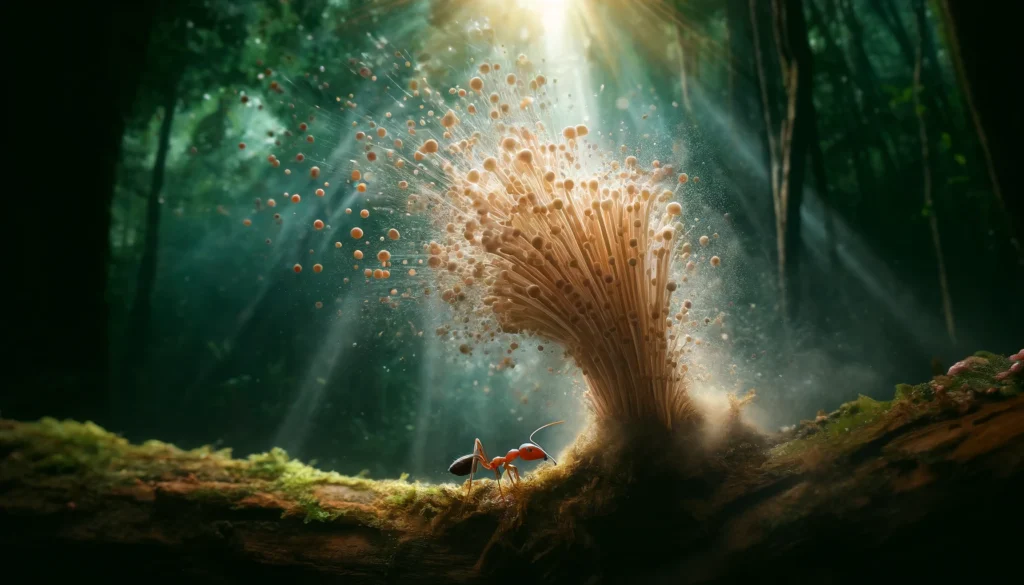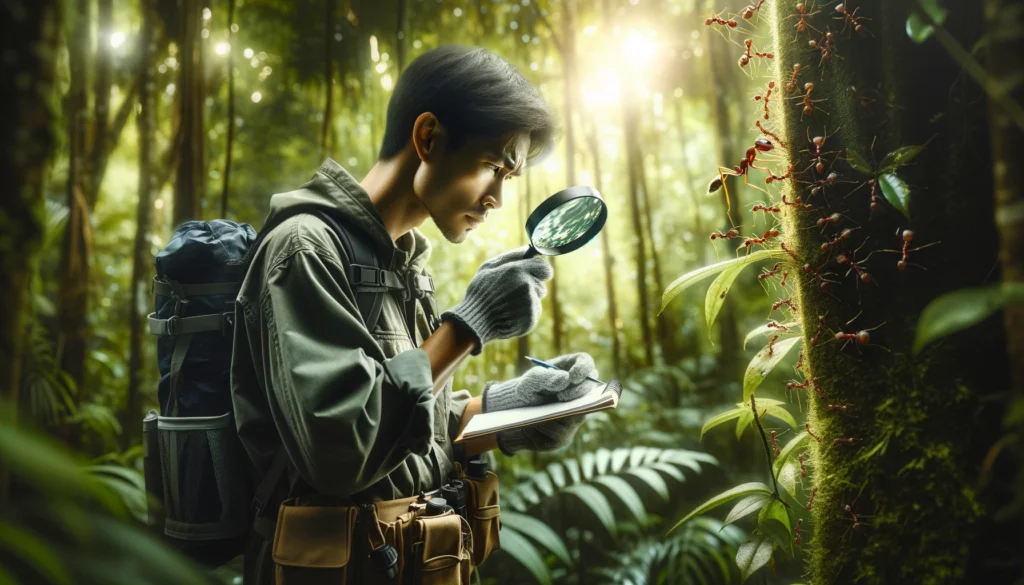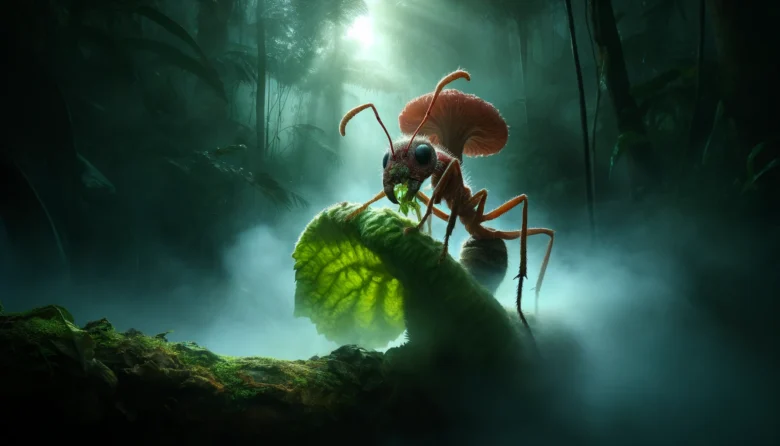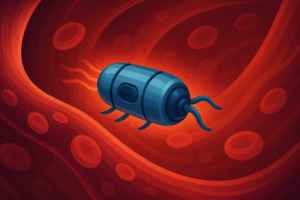Imagine stumbling upon an ant acting out of character, climbing a high stalk of grass with uncharacteristic determination. Upon reaching a certain height, it clamps its jaws onto a leaf and meets its demise. This ant has not turned into a zombie at the whim of nature’s fancy but is under the control of a parasitic fungus, Ophiocordyceps unilateralis, which commands its every move. This eerie phenomenon is not a script for a horror film but a fascinating and real display of nature’s complexity and the brutal strategies of survival within it.
The Zombie Ant Phenomenon
The Fungus Among Us: Ophiocordyceps unilateralis
The fungus Ophiocordyceps unilateralis is a master of manipulation, residing primarily in tropical rainforests. It specifically targets camponotine ants also known as carpenter ants, a group that includes carpenter ants, which are common throughout these lush habitats. The fungus’s lifecycle starts inconspicuously as a spore, but once it contacts an ant, the spore germinates, using specialized enzymes to breach the ant’s exoskeleton.

Invasion and Control
After penetrating the exoskeleton, the fungus enters the ant’s body and begins a complex, parasitic interaction. It grows inside the ant, spreading its mycelial networks and using the host’s soft tissues as a food source, all while avoiding vital organs to keep the ant alive. During this time, the fungus releases chemicals that directly affect the ant’s central nervous system, altering its perceptions and behaviors.
Behavioral Hijacking
This manipulation culminates in a grotesque but fascinating series of events: the ant, typically a creature of the canopy, experiences convulsive movements that force it to descend to the forest floor, an area more conducive to the fungus’s growth. The ant then leaves its colony—this isolation prevents the colony from identifying and removing the infected individual, thus avoiding the spread of the fungus within the group.
In its final acts, the ant climbs a plant along the forest undergrowth to a height that optimizes the fungal growth conditions—humidity and temperature. It then uses its mandibles to clamp down permanently on a leaf or twig. This death grip, known as the “death bite,” occurs around solar noon, ensuring that the conditions are just right for the fungus that will soon emerge from the ant’s body.
The Crescendo of Infection
After the ant’s death, the fungus continues to consume the remains of its host and begins the next phase of its lifecycle. It grows a stalk out of the back of the ant’s head, culminating in a spore capsule that eventually bursts, raining down spores to infect new hosts. This dramatic end is not just the conclusion of one ant’s life but the beginning of life for new fungal spores.
This macabre manipulation of behavior in zombie ants provides profound insights into the power of parasitic organisms and the delicate balance of ecosystems. It underscores the extremes of evolutionary adaptation and survival strategies that occur in nature.
Scientific Insights
Exploring the Infection
Researchers study these zombie ants through a combination of field observations in their natural habitats and controlled experiments in laboratories. This research helps scientists understand how the fungus so precisely manipulates the neurological processes of the ant.
Ecological and Evolutionary Roles
This extreme form of parasitism plays a critical role in controlling ant population dynamics, influencing the evolutionary path of both host and parasite. The fungus ensures its survival through the death of the host, showcasing a brutal yet fascinating ecological strategy.
Implications Beyond Ants
Widespread Manipulation
The concept of parasitic manipulation extends beyond ants. Similar strategies are found in other organisms, where parasites control the behavior of hosts to complete their life cycles, such as the hairworms that compel crickets to drown themselves.
Potential for Biological Control
Understanding these mechanisms opens potential uses in biological control, where natural predators or parasites manage pest populations. This could lead to innovative, eco-friendly pest control methods that minimize chemical use.

Human Interest and Cultural Impact
A Source of Fascination
The zombie ant phenomenon has not only intrigued scientists but also captured the public’s imagination, inspiring features in documentaries and horror stories. It pushes the boundaries of our understanding of free will and biological influence.
Ethical Questions
This research also brings ethical considerations to the forefront. Manipulating organisms, even for beneficial purposes like pest control, raises questions about the impact on ecosystems and the moral implications of such control.
Conclusion
The tale of zombie ants and their parasitic overlords is more than just a biological curiosity; it reveals the complexity and interconnectedness of life forms. It challenges our understanding of behavior and autonomy in nature, reminding us of the invisible battles and strange alliances that are constantly forged in the wild. As we delve deeper into these phenomena, we find ourselves questioning not only the nature of free will but also the possibilities that lie in the unseen and often overlooked corners of the natural world.
Would understanding and harnessing such phenomena be the key to sustainable solutions in agriculture and medicine, or does it encroach too deeply into the natural order? As we explore these questions, we continue to uncover the vast, interconnected web of life that operates just beyond our perception.
Author’s Note
Thank you for exploring the eerie and intriguing world of Ophiocordyceps unilateralis with me. In writing this, my aim was not only to shed light on the fascinating interactions within nature but also to prompt reflection on the broader implications these interactions may have on our understanding of life and manipulation. Nature’s narratives are as complex as they are captivating, and I hope this post inspires further curiosity and respect for the delicate balances within ecosystems.
G.C., Ecosociosphere contributor.
References and Further Reading
To deepen your understanding of this remarkable phenomenon, consider exploring these recommended books, all available on Amazon:
- “Parasite Rex: Inside the Bizarre World of Nature’s Most Dangerous Creatures” by Carl Zimmer – A compelling exploration of the world of parasites and their complex lives.
- “The Triumph of Sociobiology” by John Alcock – A book that discusses the behavior of animals, including the influence of parasites on behavior.
- “This Is Your Brain on Parasites: How Tiny Creatures Manipulate Our Behavior and Shape Society” by Kathleen McAuliffe – An intriguing look at how microscopic organisms can influence everything from individual behavior to the outcomes of societies.





Comments
Hello There. I found your blog using msn. This is a very well written article. I will be sure to bookmark it and return to read more of your useful info. Thanks for the post. I’ll certainly return.
Good blog! I truly love how it is simple on my eyes and the data are well written. I am wondering how I might be notified whenever a new post has been made. I have subscribed to your feed which must do the trick! Have a nice day!
Sweet site, super design and style, really clean and utilise genial.